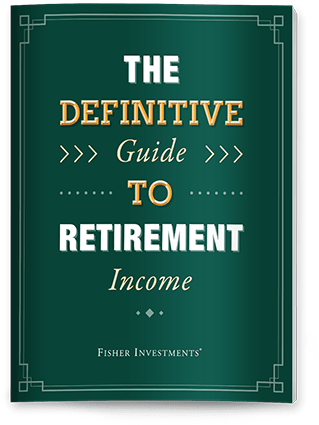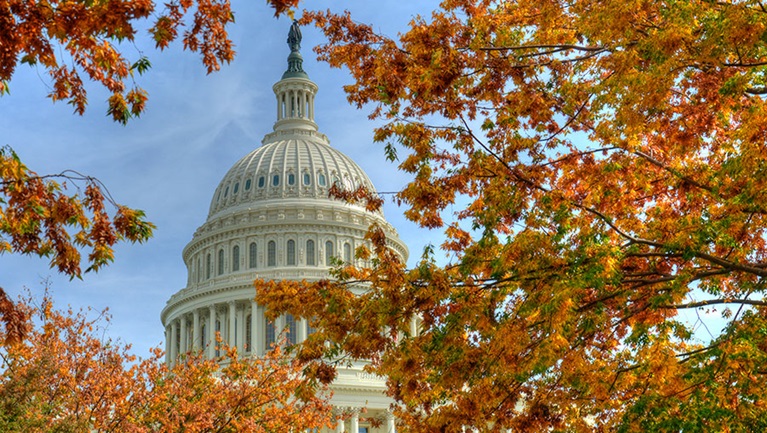Personal Wealth Management / Market Analysis
Central Contradictions: Comparing Fed Officials’ Conflicting Quotes
Fed officials’ conflicting comments highlight the folly in attempting to predict policy moves.
How will the Fed close out 2025? Since lowering its fed-funds target range by a quarter of a percentage point (ppt) last month, most analysts have asserted America’s central bank will cut rates twice more this year—citing things like futures markets and the Fed’s “dot plot” of forecasts. And hey, maybe so. Yet Fed officials’ latest comments indicate they aren’t exactly unanimous—highlighting the fruitlessness of trying to predict monetary policy decisions, which don’t determine market direction anyway.
Those penciling in two more cuts in 2025 presume a quarter-point cut at each remaining meeting (October and December).[i] Underpinning many of these calls? Fed members’ collective forecasts for the fed-funds target range at yearend, commonly known as the “dot plot.” While responses varied in September 17’s gripping edition, the 3.50% – 3.75% range for year-end 2025 tallied the most votes—half a point below the current 4.00% – 4.25%. Others point to fed-funds futures markets, which imply a 99.4% probability of a quarter-point cut in October and an 89.0% probability of another in December.[ii]
Yet within the Fed itself, there is a range of views. Some argue for lower rates, like newly appointed Board member Stephen Miran, who tallied September’s only 0.50 ppt cut vote. Miran is now calling for rapid, deep rate cuts moving forward.[iii] Or Vice Chair Philip Jefferson, who noted Tuesday, “the labor market is softening, which suggests that, left unsupported, it could experience stress,” implying more cuts ahead.[iv]
Others warn against cutting too quickly. Earlier this week, Boston Fed President Susan Collins framed aggressive cuts as risky, suggesting they could re-ignite inflation.[v] Similarly, Cleveland Fed President Beth Hammack told pundits Monday, “I think we really need to maintain a restrictive stance of policy so that we can get inflation back down to our goal.”[vi]
And, well, some officials are playing their cards closer to the vest. New York Fed President John Williams suggested the Fed will make decisions on a “meeting-by-meeting basis,” while St. Louis President Alberto Musalem noted he is open to further cuts, but the Fed must “move cautiously” to avoid fanning the inflation flame.[vii] We kind of have to give a nod to Williams here for his long-running efforts to remind everyone monetary policy isn’t on a preset path. Heck, 10 years ago, when he was president of the San Francisco Fed, he whipped up t-shirts proclaiming, “Monetary Policy: It’s Data Dependent.” They were a free giveaway … we tried, friends, but failed to obtain one. Maybe this debate will lead him to decide it is time for hooded sweatshirts?[viii]
Clearly, this hodgepodge of viewpoints is far from unanimity. The Federal Open Market Committee (FOMC) has 12 voting members, each with their own opinions and interpretations of data. And these opinions aren’t ironclad. New economic data roll in almost every day, even with the nice folks at the Bureau of Labor Statistics and Bureau of Economic Analysis furloughed, and it doesn’t take much new data to shift views on inflation and jobs—the two halves of the Fed’s dual mandate. Between the ADP private payrolls report, market-based inflation indicators and the inflation and hiring components of purchasing managers’ indexes, there are plenty of opportunities for some or all of these folks to change their opinion by October’s or December’s meetings.
Note, too, this mixed messaging isn’t novel—Fed members’ views usually diverge, contributing to the perpetual impossibility of predicting their next move. There is often healthy debate, even when members eventually reach a unanimous policy decision. Take July 2015’s meeting, for example. Despite voting unanimously to hold its target range at 0.00% – 0.25%, former Fed Governors Narayana Kocherlakota and Daniel Tarullo argued for raising rates before introducing quantitative tightening (QT) measures.[ix] At that meeting, like so many others, members extensively debated word choice in the policy statement, a reflection in many cases of their disparate views of future policy.
Or fast forward to December of that year. While all committee members voted to raise the range to 0.25% – 0.50%, several officials floated lowering rates into negative territory, following the European Central Bank’s moves around that time.[x] This is probably why, back in 2005, former Vice Chairman Roger W. Ferguson said, “if one looked only at the final vote, one would miss the lively and wide-ranging debate that goes on within the [FOMC] meetings themselves.”[xi]
Also, their divergent comments this week seemingly match the very apparent disagreements within the dot plot. Yes, the 3.50% – 3.75% range received nine votes, the most of any range. But the current 4.00% – 4.25% range received six, with the remaining four votes spread across various outcomes. Again, this is far from consensus. It all kind of makes us wonder why Fed utterances get so much attention in the first place. None of this is news. To us, the constant coverage is more a sign of investors’ misguided central bank obsession, not a sign these things actually matter.
And really, they don’t. Monetary policy isn’t a huge economic driver, and it has no set stock market relationship. It is just one factor influencing the economy, which is only one of stocks’ three broad drivers. Consider: The Fed can only adjust the fed-funds rate, which amounts to influencing one end of the yield curve, the short end. And contrary to popular belief, Fed rate moves don’t predict or drive longer-term rates. Those are market set, hinging largely on inflation expectations and other supply and demand drivers. (The Fed can try swaying them through things like long-dated bond purchases or sales, but their influence may be overwhelmed by market forces.) Yes, the yield curve is an important economic driver, influencing bank lending. But that is only one variable affecting economic activity like corporate investment and consumer spending. Industry trends, taxes, regulations, supply chain dynamics and even qualitative trends like risk aversion and the amount of excess in the system also play a role.
Plus, history overwhelmingly shows rate cuts and hikes aren’t inherently bullish or bearish, respectively. Sometimes the Fed starts cutting in a bull market and finishes in a bear market. Sometimes it starts cutting after a bear market begins. But rate moves’ widespread coverage typically means they are pre-priced, so even if you could predict every move with pinpoint accuracy, it still wouldn’t tell you what stocks will do over the following 6, 12 or 18 months. You must look at the entire economic landscape, never mind political and sentiment drivers.
So tune down the constant noise and speculation around Fed decisions, as predicting them is impossible and unnecessary. Markets know the Fed is more a rate follower than a rate setter anyway. Investors would be well served to take heed.
[i] “Goldman Sachs Sees Fed Cutting Rates Thrice in 2025, Twice More in 2026,” Staff, Reuters, 8/13/2025. “Fed Set to Deliver Two More Cuts This Year but Data Risks Loom, Deutsche Bank Analysts Say,” Emily Jarvie, Proactive, 9/18/2025.
[ii] Source: CME FedWatch, as of 10/1/2025.
[iii] “New Thinking Frameworks at the Federal Reserve,” Chris Giles, Financial Times, 9/30/2025.
[iv] “Fed Vice Chair Jefferson Says US Job Market Weakening, Could Face Stress,” Howard Schneider, Reuters, 9/30/2025.
[v] “Fed's Collins Cautions Against Aggressive Rate Cuts Given Inflation Issues,” Michael S. Derby, Reuters, 9/30/2025.
[vi] “Fed's Hammack Says US Needs to Maintain Restrictive Policy Amid Inflationary Pressures,” Staff, Reuters, 9/30/2025.
[vii] “Fed's Williams: Recent Rate Cut Aimed at Bolstering Job Market,” Michael S. Derby, Reuters, 9/29/2025. “Fed's Musalem: Open to Further Cuts but Must Be Cautious,” Staff, Reuters, 9/29/2025.
[viii] We can hope!
[ix] Source: US Federal Reserve, as of 10/1/2025. Meeting of the Federal Open Market Committee on July 28–29, 2015.
[x] Source: US Federal Reserve, as of 10/1/2025. Meeting of the Federal Open Market Committee on December 15–16, 2015.
[xi] Source: US Federal Reserve, as of 10/1/2025. Remarks by Vice Chairman Roger W. Ferguson, Jr. At a European Central Bank Colloquium in Honor of Tommaso Padoa-Schioppa, The European Central Bank, Frankfurt, Germany, April 27, 2005.
If you would like to contact the editors responsible for this article, please message MarketMinder directly.
*The content contained in this article represents only the opinions and viewpoints of the Fisher Investments editorial staff.
Get a weekly roundup of our market insights
Sign up for our weekly e-mail newsletter.

See Our Investment Guides
The world of investing can seem like a giant maze. Fisher Investments has developed several informational and educational guides tackling a variety of investing topics.





